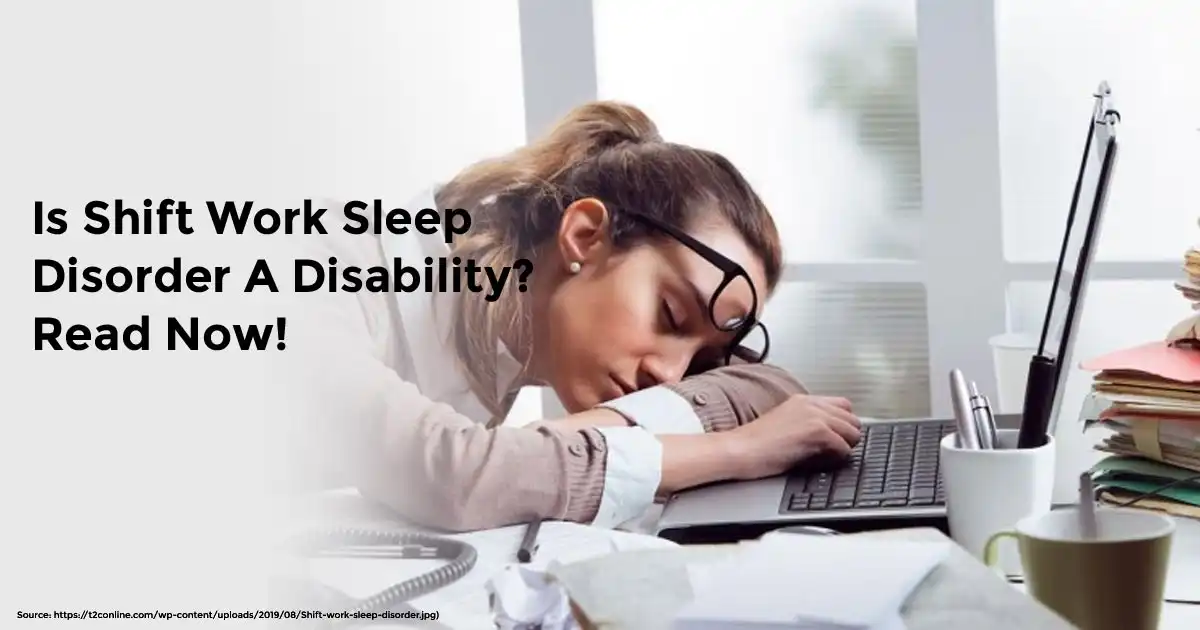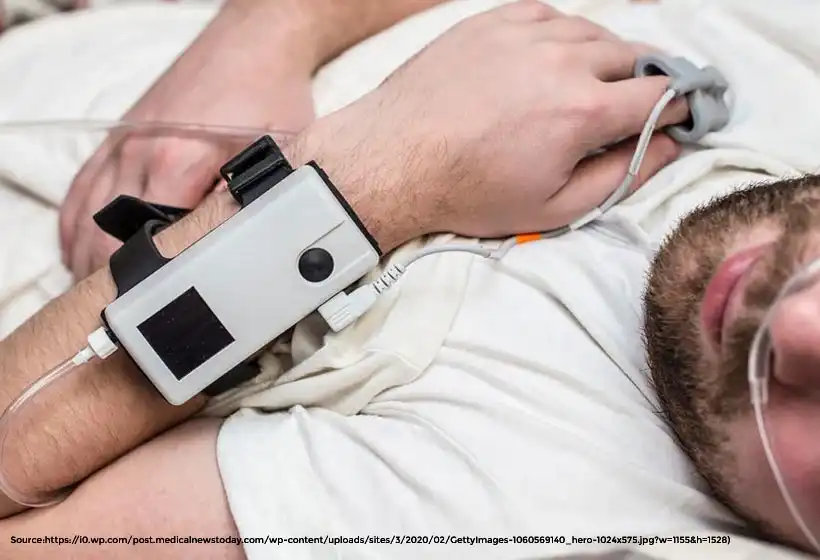What Is Shift Work Sleep Disorder? How To Prevent It?

I know we have those days of work when we feel sleepy. However, for those who work nights or alternate shifts, this can be more intense.
I have experience with Shift Work Sleep Disorder (SWSD). It results in excessive drowsiness and serious health problems. Shift Work Sleep Disorder is caused by a break in our circadian cycle.
Don’t stress! I am here with ideas for tests and treatments for the same!
Today, I will discuss Shift Work Sleep Disorder in details. We will explore the causes and symptoms and ways to prevent it.
So, keep reading to learn more!
What Is Shift Work Sleep Disorder Disability?
Do you have an alternate work schedule? I mean, other than 9 a.m. to 5 p.m.? If it is not, then you may suffer from Shift Work Sleep Disorder. It has an impact on people who work late. This sleep issue occurs if you work early shifts or rotate shifts.
Circadian rhythms are alterations in physical, mental, and behavior. It runs on a 24-hour schedule. Light and darkness affect circadian rhythms. SWSD can occur when your work schedule conflicts with your body’s natural clock.
This disorder makes it difficult to adjust to a different sleep/wake schedule. It may lead to significant issues like:
- Trouble sleeping when you want to.
- Difficulty staying asleep.
- Unwanted sleepiness.
Understanding the causes of Shift Work Sleep Disorder is essential. It will help you to develop remedies. This disorder is caused by a number of reasons. To learn more, let’s take a closer look!
Know more about Shift Work Sleep Disorder!
What Causes Shift Work Sleep Disorder?
I am aware of your sleep disturbances. It is caused by a mismatch between your internal body clock and the outside environment. Let us explore some of the reasons behind Shift Work Sleep Disorder.
Melatonin:
- A naturally occurring hormone that aids with sleep.
- Melatonin levels are highest at night (in the dark) and lowest during the day (in the light). It is due to the pineal gland in your brain.
- The hormone cortisol is created and secreted by the adrenal glands.
- Your cortisol levels typically peak in the morning just before you wake up. It is lowest in the evening when you go to sleep.
- Beyond your circadian cycle, cortisol plays a number of other significant functions.
How is melatonin good for sleep? Read on!
Obstacles Faced by Non-traditional Shift Employees
- These cues conflict with your resting and waking hours if you work non-traditional shifts.
- This mismatch may have detrimental effects on your waking and sleeping patterns.
Workers on Night Shifts
- If you work night shifts, you often sleep during the day. It is at the exact moment when your body is sending the greatest signals for you to wake up and stay awake.
- Your daily sleep may thus be brief and frequently interrupted.
- Because your melatonin levels are normally at their peak throughout the night, you may frequently feel tired and drowsy when working.
Hence, control the impacts of SWSD on your day-to-day activities. Get aware of these elements and how they affect your sleep.
Let us search for some of the symptoms of Shift work sleep disorder below:
Shift Work Sleep Disorder Symptoms

Shift Work Sleep Disorder affects those who work irregular hours. Two of the most common symptoms are hypersomnia and insomnia.
Insomnia
- Having difficulty falling or staying asleep is known as insomnia.
- It could be hard for you to go to sleep after your shift if you work from 4 to 7 in the morning.
- However, if you work in the evenings, you can find it difficult to fall asleep. You wake up a lot during the night.
Hypersomnia
- Excessive sleepiness during times when you should be awake is known as hypersomnia.
- If you work nights or early morning shifts, this may be very difficult.
- Not only can being overly tired at work, it can also negatively impact your productivity.
For more information, learn more about hypersomnia!
Some of the other issues may be familiar to you as a shift worker. It includes:
- Headaches: Frequent headaches can result from sleep deprivation.
- Poor concentration: Lack of sleep makes it difficult to concentrate on tasks.
- Low energy: You may constantly feel worn out and exhausted.
- Decreased awareness while working: It can be difficult to maintain your focus during your shift.
- Irritation or poor mood: You may experience mood disorders and irritation more frequently.
It’s important to consult a healthcare professional if you identify with any of these. They can assist you.
To treat Shift Work Sleep Disorder (SWSD), a number of tests, medications, and lifestyle modifications are necessary. Gain an understanding of how these tests and therapies operate. Here’s a thorough overview of the procedure:
Treatment and Tests

I recommend keeping a detailed sleep journal for at least two weeks, noting:
- When you fall asleep and wake up.
- How many times do you wake up while sleeping?
- How rested do you feel?
- Factors affecting your sleep, like caffeine use and noise disturbances.
Symptoms must persist for at least three months. Your healthcare provider may suggest a sleep study. They may suggest other tests to rule out conditions like sleep apnea or medication side effects.
Shift Work Sleep Disorder Treatment
There’s no cure, but treatments target core features like circadian misalignment, sleepiness, and sleep disturbances.
Main Forms of Treatment
- Changes to your work routine or schedule (if possible).
- Changes to your sleep routine at home.
- Bright light therapy.
- Melatonin supplements.
- Sleep medications.
- Wake-promoting agents (medications).
You may bring changes to your work routine or schedule. Discuss schedule changes or work adaptations with your employer. Take actions like:
- Avoid sunlight exposure in the morning if you need to sleep during the day.
- Limit the number of consecutive night shifts.
- Take more than 48 hours off after a string of night shifts.
- Avoid prolonged shifts and excessive overtime.
- Avoid long commutes that reduce sleep time.
- Avoid frequently rotating shifts.
- Plan a nap before or during the night shift.
You may bring some changes to your sleep routine at home. Follow the below tips:
- Aim for at least seven to nine hours of sleep every day.
- Follow bedtime rituals and keep a regular sleep schedule, even on weekends.
- Create a quiet, dark, and peaceful sleeping environment.
- Ask family and friends to minimize noise during your sleep time.
- Use a “Do Not Disturb” sign to prevent interruptions.
- Practice good sleep hygiene by planning your sleep schedule and avoiding caffeine, alcohol, and nicotine.
Other Means Of Treatment
- Use bright light therapy to help adjust your body to a new schedule.
- Follow your provider’s instructions on when and how long to use the light therapy.
- Bright light therapy is especially beneficial for night shift workers.
- Take melatonin supplements
- Consult your provider before taking melatonin supplements.
Your provider may prescribe sleeping pills for short-term use. Be aware of the side effects of long-term use.
Consult your healthcare provider to see if medications are right for you.
I know that avoiding shift work sleep problems can be difficult. You may not be able to keep regular working hours. Take action to control the symptoms and create a pattern. Enhance the quality of my sleep.
Learn more about different types of sleep disorders!
FAQs on Shift Work Sleep Disorder
- How do you treat shift work sleep disorder?
The main forms of treatment for shift work sleep disorder include adjusting your work routine or schedule (if possible), modifying your sleep routine at home. Use bright light therapy.
- Does shift work cause sleep problems?
Yes, shift work can indeed cause sleep problems. People who work extremely long shifts, such as doctors, nurses, soldiers, firefighters, and police officers, often experience severe sleep loss. If you have a schedule that doesn’t allow you to get enough sleep each day, you might also face sleep issues.
- What is the best sleep aid for shift workers?
Melatonin is the best sleep aid. When used correctly, it can do two key things: First, it helps adjust the timing of your circadian clock, and second, it signals your brain to sleep at different times.
- How long does it take to recover from shift work sleep disorder?
Recovery can vary depending on the severity and duration of sleep loss. It takes up to seven nights. Recent findings indicate that up to 18% of hospital employees work night shifts. Struggle with shift work hours develops shift work disorder (SWD).
- At what age should I stop working night shifts?
If you’re over 50, it’s recommended to consider reducing night shifts and long hours. As we age, night work can significantly affect sleep quality. It can make recovery from demanding shifts more difficult.
- Can I receive disability benefits for shift work disorder?
Yes, if you experience sleep problems due to working rotating, you might be eligible for workers’ comp benefits in Los Angeles and throughout California.
- What is the healthiest shift work schedule?
The healthiest shift work schedule would involve a clockwise rotation. It starts from morning to afternoon to night shifts. It’s best to limit night shifts to blocks of 3. Keep each shift to 8 hours, and ensure a 3-day recuperation period after working night shifts.
- What happens to my brain when I work the night shift?
Working the night shift can disrupt your circadian rhythms. This can affect the production and levels of melatonin. This hormone is crucial for protecting the brain and combating oxidative stress. This disruption could potentially increase the risk of neurodegenerative disorders.
- How do I manage shift work sleep disorder?
To manage shift work sleep disorder, consider these lifestyle changes. Stick to a consistent sleep schedule, even on days off. Take 48 hours off after working a series of shifts if possible. Wear sunglasses when leaving work to reduce sun exposure. Take naps whenever you can, and limit caffeine intake for at least four hours before bedtime.
- Does working shifts impact life expectancy?
A large study over the past 22 years has revealed that one in ten face an increased risk of early death. This underscores the serious impact shift work can have not just on our own health, but potentially on the safety of others in certain jobs.
